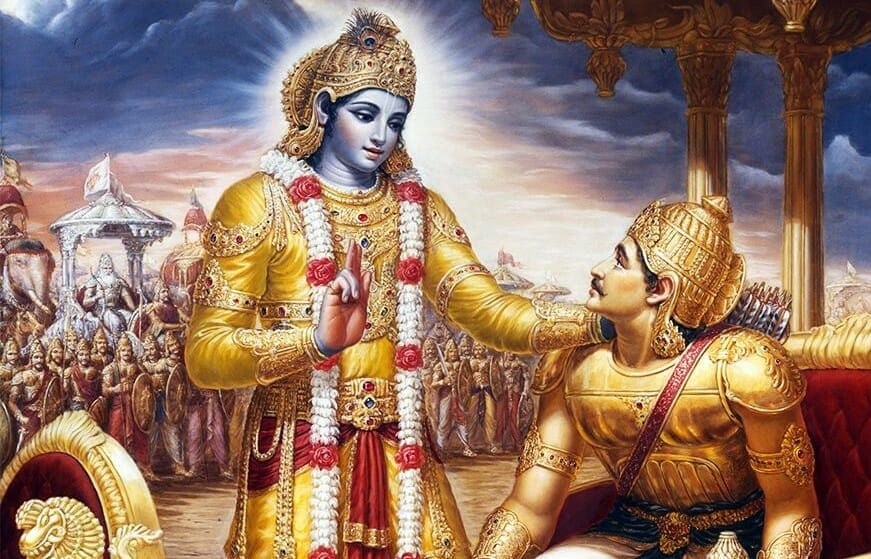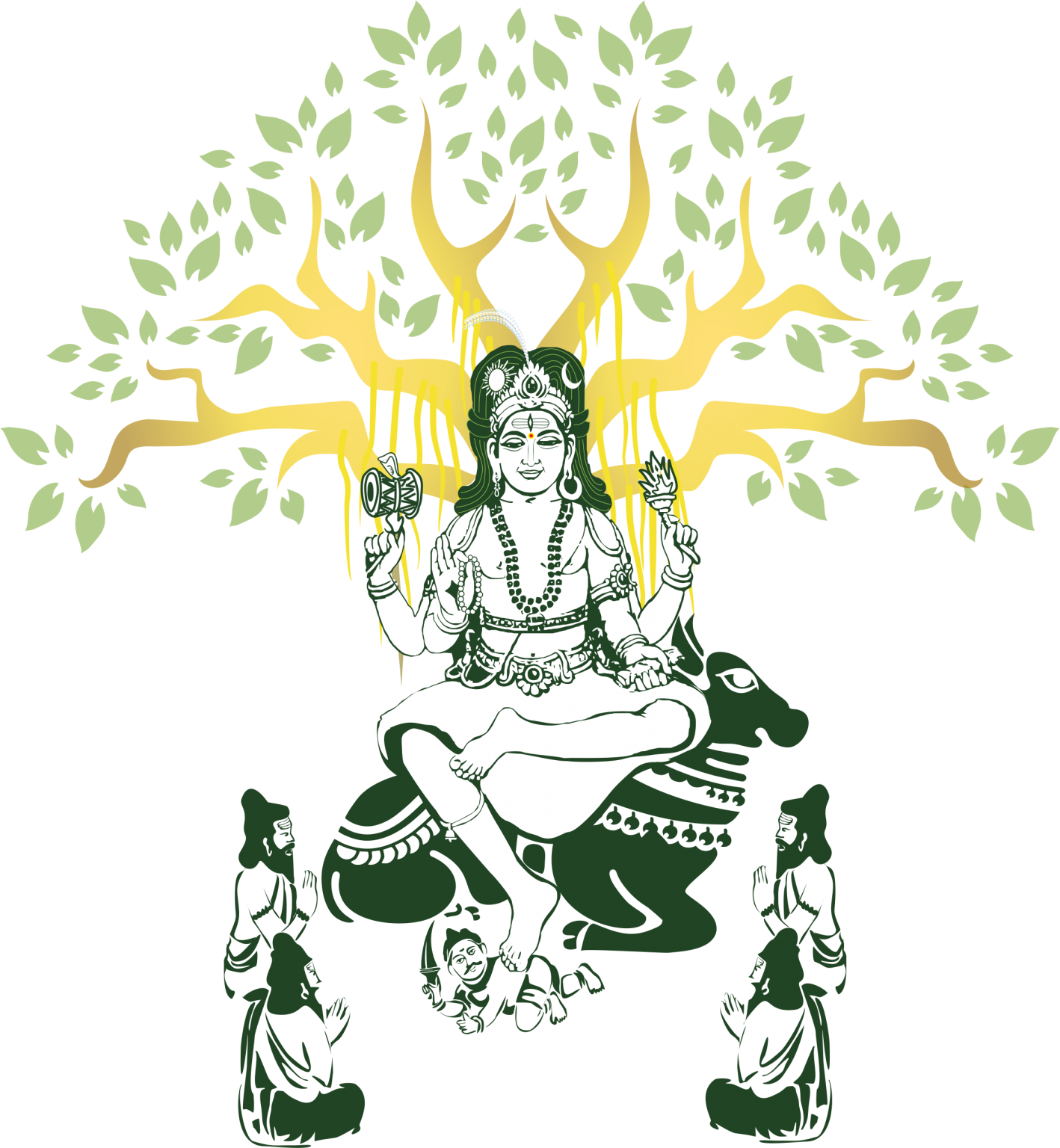Swami Dayananda Saraswati
Lord Dakṣiṇāmūrti is shown seated under a banyan tree, surrounded by his disciples. The Lord has four hands. In his lower right hand, he shows the cinmūdra and also holds a japa-mālā. In his upper right hand, the Lord is holding a ḍamaru (a small drum) and a pāśa, a noose. In his upper left hand, there is fire and in the lower left hand, a book. The sun and the moon adorn the crown of the Lord. We also see in his matted locks the maiden figure representing the Gaṇgā. In his right ear, the Lord wears a man’s earring, and in his left ear, a woman’s earring. He is adorned with necklaces and armlets, a belt, and bracelets. His left foot is resting on his right thigh (in the posture called Vīrāsana) and his right foot presses a dwarf-like figure called Apasmara.
The Lord supports this universe made of the five basic elements: space, air, fire, water, and earth. The drum symbolizes the element space, since it produces sound, and the flying matted locks held in place by a bandana, symbolize the air. The element fire is shown in one hand, the Ganga flowing from the Lord’s head stands for water. The entire form of the body of the Lord is made of the element earth. The sun represents all luminaries, and the moon, all planets. The damaru, the small drum (which stands for the element space), also symbolizes creation, whereas fire stands for destruction, including the destruction of ignorance. The various ornaments represent the glories of the Lord.
The banyan tree under which Lord Dakṣiṇāmūrti is sitting represents samsāra which has no beginning. However, sarmsāra has an end. Being mithyā, its reality is in Brahman, the root and therefore, Lord Dakṣiṇ-āmūrti is shown as seated at the root of the tree. The cinmūdra is a symbol for the knowledge of the identity of the individual and the Lord, which puts an end to samsāra. The book in the lower left hand is the Veda. The japa-mālā, is a symbol for all religious disciplines. The bull, on which the Lord rides, stands for dharma, justice, and also māyā, which the Lord wields. His name is Nandi (meaning joyful) or Nandikeśvara (the Lord of Joy). Lord Śiva here is Ardhanārīśvara, half male and half female, representing puruṣa and prakṛti, the cause of creation.
This is symbolized in Lord Dakṣiṇāmūrti by a male earring in the right ear and a female earring in the left. The figure held in check under the right foot of Lord Dakṣiṇāmūrti is called Apasmara, representing all obstacles to our pursuits. The form of Dakṣiṇāmūrti enshrined in the temple at 1⁄4rṣa Vidyā Gurukulam is called Medhā-Dakṣiṇāmūrti. Since Dakṣiṇāmūrti is the source of spiritual knowledge, seekers always invoke his grace for medhā, power to inquire and to learn; and for prajñā, clear knowledge of the self.




